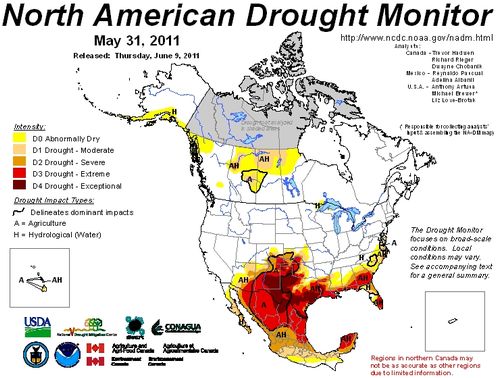Sweltering summer heat and a persistent lack of rain have deepened an historic drought gripping Texas and surrounding U.S. southern states.
And despite heavy rains and flooding to the north, there is little relief in sight for the South, according to a report issued Thursday by U.S. climatologists.
The "Drought Monitor" report released Thursday from a consortium of national climate experts said that over the last week, the worst level of drought, called "exceptional drought," expanded to cover more than 70 percent of Texas.
And 91 percent of the Lone Star State suffers from either exceptional drought or the second-worst category, "extreme" drought.
"We've had extraordinarily high temperatures and really high wind. It is still bad," said Don Conlee, acting state climatologist for Texas.
Arizona likewise has more than 70 percent of its land in extreme and exceptional drought, up from 68 percent. Louisiana saw exceptional drought spread to 65 percent from 28 percent in the week, while Oklahoma saw it spread to a third of its land from a tenth.
Drought has ravaged the region, sparking thousands of wildfires, drying up grazing land for cattle, and ruining thousands of acres of wheat and other crops.
Texas experienced its driest spring on record with only a fraction of the rainfall typically seen.
Overall, this is third-worst drought in Texas history up to this point of the year, Conlee said.There was light precipitation over central and eastern Texas on Wednesday, which gave firefighters some relief in battling a devastating wildfire there that has displaced 1,800 people and destroyed dozens of homes. One fire that erupted Sunday outside Houston has scorched more than 5,200 acres.
But western Texas and Arizona remain dry, and above-normal temperatures in the forecast for the region only add to the misery.
Drought in the South sees its opposite extreme in the North, severe flooding.
This week floodwaters forced the evacuation of thousands of residents in North Dakota as heavy rains swelled waterways from Montana through Missouri.
And more rain is expected over the next several days through the Missouri River basin, according to forecasters.

Reader Comments
to our Newsletter